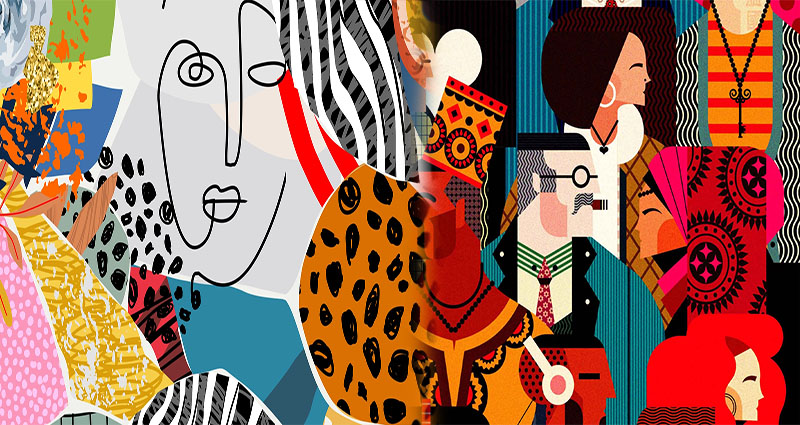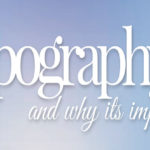Graphic design is a fluid field, with the most popular styles constantly changing. As a marketer and graphic designer, it’s important to understand the latest trends and what your target audience expects to see in their marketing materials. While there are many different approaches to designing corporate logos, web pages and advertisements, we’ve compiled this list of some of the most popular ones used today:
Minimalism
Minimalism is all about reducing the number of elements in a design. It’s about using simple shapes and colors, as well as keeping it clean and simple. Minimalism is also known for using a small number of fonts, which is why it’s often used in corporate branding when you want to convey professionalism and trustworthiness.
Minimalist designs are often very plain looking because they focus on getting rid of any unnecessary elements from your logo or website design so that what remains can have maximum impact on its viewers’ senses–in other words, it forces them to focus on what matters most: You!
Typography
Typography is a style of design that uses type and lettering as the main visual element. The use of a certain font or typeface is a common characteristic of typography, but not all fonts are created equal. For example, Helvetica has been used by several companies because it’s simple and easy to read at any size. On the other hand, Comic Sans is typically used for playful messages or headlines where you want people to laugh at your clever wit (not!).
Typography can be used to create emphasis, add meaning or attract attention–or all three! It’s also important to remember that there isn’t just one way for something like this to happen; there are lots of different ways depending on what kind of message you’re trying send through your corporate graphic design work.
Trendy
Trendy design is based on the latest trends. It’s not uncommon for trendy designs to be short-lived and not very creative, practical or functional.
Retro
The retro style is a design that uses the past to create a current style. This can be seen in film, music and architecture, but it’s most commonly associated with fashion. The 1950s and 1960s were decades of great change, so they’re often referenced by designers who want their work to reflect this time period.
Retro designs are popular with companies that want to make a statement about their history or identity. For example: if you were designing logos for an old car company who had been around since the 1950s or 1960s (like Ford), then using elements from that era would help communicate what kind of brand they were trying to build today through your designs.
Geometric
Geometric designs are very popular in modern logos and branding. They use shapes and lines to create a design, which can be very complex or minimalist. Geometrics are often used as part of a company’s overall corporate identity scheme, but they can also stand on their own as an individual logo that represents a particular product or service.
Geometric shapes have been used throughout history by many cultures around the world because they’re simple and easily recognizable by people from different backgrounds. There are several different types of geometric designs:
- Symmetrical – Symmetrical geometric designs have equal sides with parallel lines that meet at right angles (90 degrees). An example is an equilateral triangle where all sides are identical in length; another example would be two squares positioned next to each other so that their corners form four 90-degree angles when connected together by straight lines drawn between them.* Asymmetrical – Asymmetrical geometric forms feature nonparallel sides connected together by curved lines rather than straight ones; this gives them more character than symmetrical forms since there is no exact center point where everything meets up perfectly.* Nonrectangular – Nonrectangular geometrics may also include more than one type within one piece such as circles within squares within diamonds etc..
Modernist
Modernist design is characterized by simple, clean lines, minimalism and a lack of ornamentation. Modernist graphic design can be seen in magazines and newspapers.
The term “modern” refers to the period between the late 19th century and early 20th century when artists began to move away from traditional art forms in favor of new ones that reflected their changing world view. The Bauhaus movement brought together artisans from various disciplines who shared similar philosophies about how their work should reflect these new ideas about society and humanity’s place within it (1). Their work was simple yet expressive; they used geometric shapes rather than realistic depictions like those found in traditional art pieces (2).
This is an overview of the most popular graphic design styles.
In order to create a successful graphic design, you must first identify the style you want to use. Each graphic design style has its own unique characteristics and audience, so it’s important to choose the right one for your project.
Here are some of the most popular corporate graphic design styles:
- Modern – This style was developed in the mid 20th century and features clean lines, bold colors and simple typography. It tends to be more minimalistic than other styles because it focuses on function over form (for example, think Apple ads). The primary purpose behind this type of branding is simplicity; however, this doesn’t mean that modern logos aren’t creative! In fact, many companies take advantage of their logo as an opportunity show off their creativity by using unexpected shapes or unusual colors within their logos’ designs.*
There are many different graphic design styles to choose from, and each one has its own unique look and feel. The most popular ones are minimalism, typography, trendy, retro and geometric designs. The key is having the right combination of colors and shapes that work together in harmony–this can make or break your brand!











